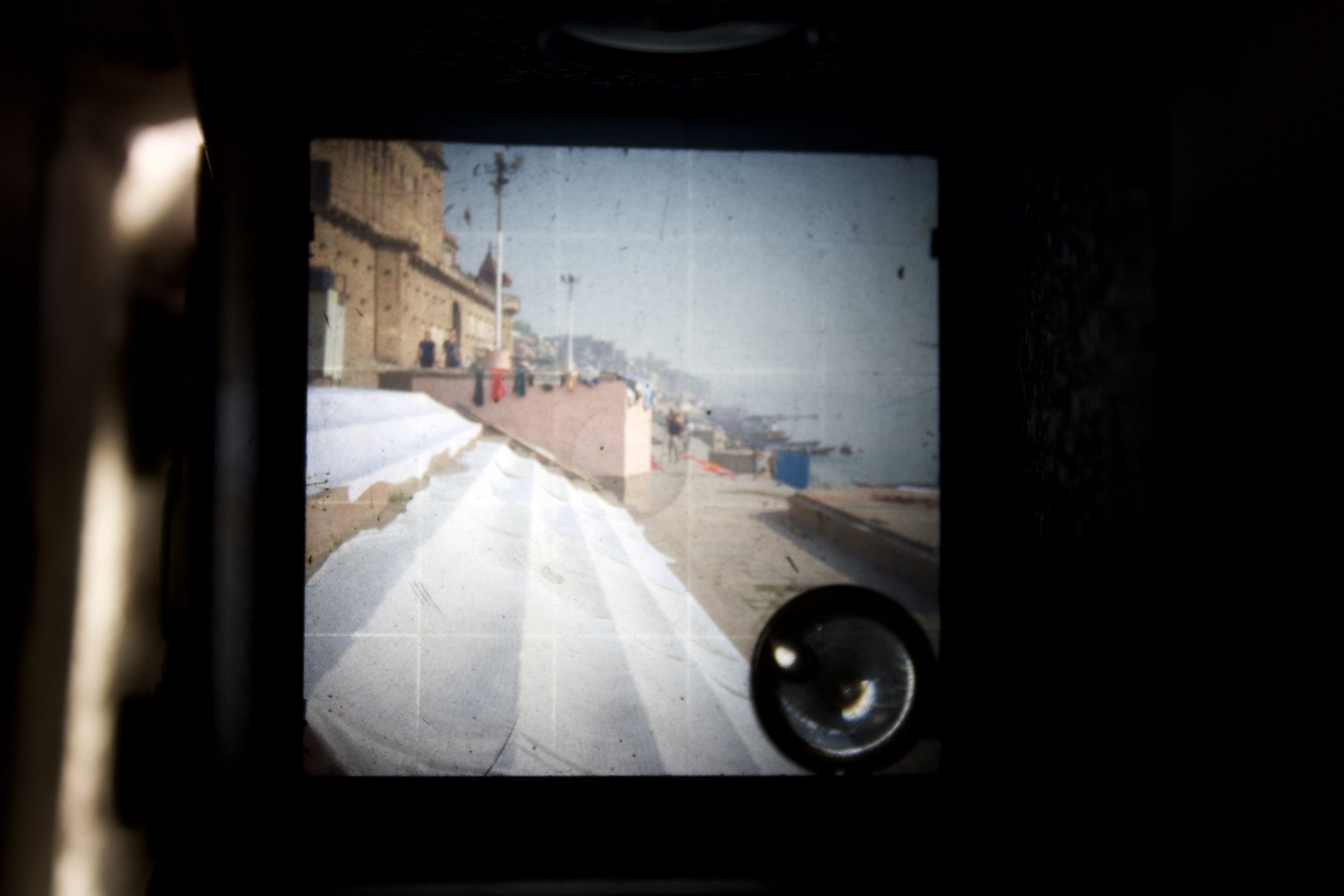Last night at an artist talk Dorothy Cross at the Alice Boner Institute talked about the difficulty or absurdity of bringing art or making art in Varanasi and forcing it into the place as a thing that is somehow meant to belong, and she recognized that it will always feel foreign and out of place. Varanasi already has all her own signs and markers. There is no lack of content and at every turn the city is full of its own quintessence, it drips, quite literally down the streets and flows to the river. This is not only because of its age and stories, colour and ritual but also because of its place in the heart of its people.
Cross mentioned that a contribution could be a temporary work like a performance or sound work as the only really beneficial artwork to gift Varanasi and I have to agree. She came to the residency without a plan, no drawings prepped no proposal outline and this resonated with me as a far truer way to approach art making. Especially when the directive is to respond to a place and its people. She drew across time and space to locate her ongoing, wider practice to her current location on the steps of Assi ghat on the sacred river.
The more I stay the less grounded I feel and perhaps this is a good thing, perhaps I'm actually facing a truth of not belonging, that home (Aotearoa) is home for a reason. I’ve begun to feel rudderless and adrift on the maze of streets. This is not helped by the many cobbled alleyways that I’m forced to negotiate cow pats and sleeping dogs, cows, donkeys, goats or menacing monkeys. However, after a late night vege cheese burger I feel surprisingly more connected to a street vendor outside Kriti Gallery. Not exactly Indian but not entirely western either. The deep-fried bun helped.
The action of the flâneur that I am familiar with, seems impossibly fraught here, with a collision of a disconnected self and deeply engrained social and cultural structures. The real flâneur knows the places he wanders, loves the people he is criticizing, is knowledgeable of the politics (even if he refuses to participate) of his home, but here I am lost, and I am other. Rootless and without solid footing, I am from somewhere far away distance has a stretching quality to it, the call of home creates a thinness in you only to be remedied by your return. So, I have had to quickly come to terms with the simple act of observing and recording, and of that holding its own value in my creative practice. I am failing in capturing the invisible substance of this place, but I am committed to this failure and it is responding in kind.
I am considerate of people and their various rituals and customs and therefore you will never see images of the burning ghats or interiors of temple shrines, of streets kids sleeping or funeral procession. These are not my people, and this is not my place and it behooves the tourist to remember that statement, “this is not mine”. Not everything needs a photo, not all memories are to be locked into a visual narrative, captured on a screen. From what I know about memory making the stories are better and more resilient that any rigid perspective. I’ll tell you more about the burning ghats in a later post, but this will have no photos. But I will record, again and again, my attempts at capturing this place, though the more I know this place it feels like the truth is hidden just out of sight or in my periphery and I turn my head only to find it shift out of focus again.

